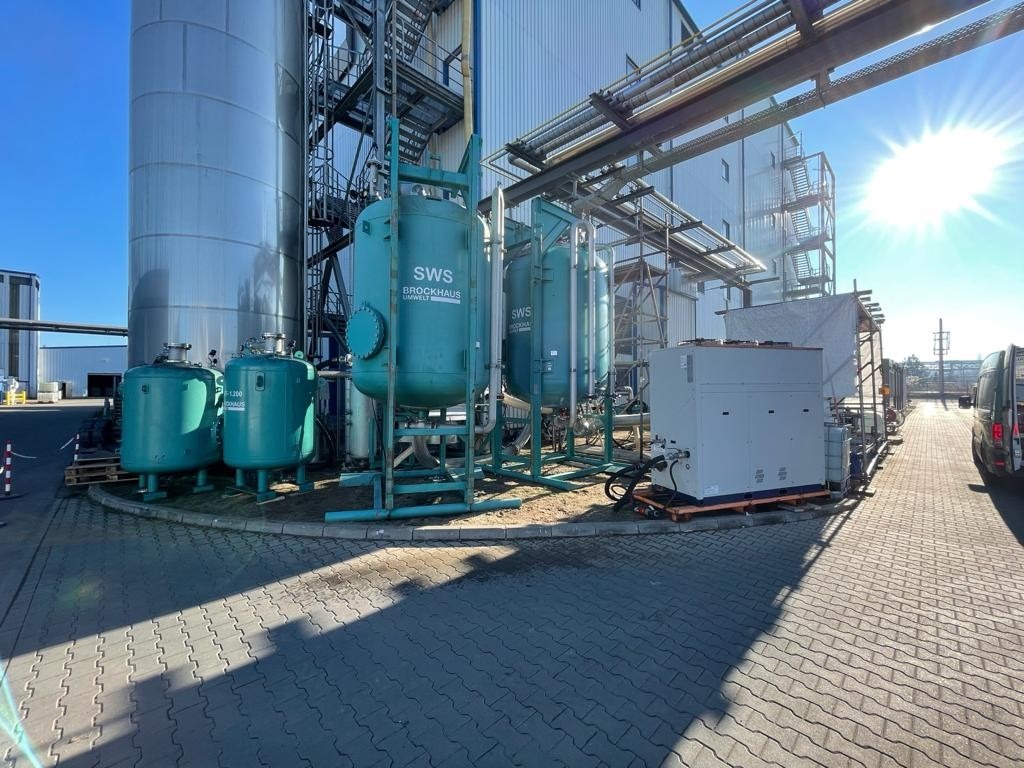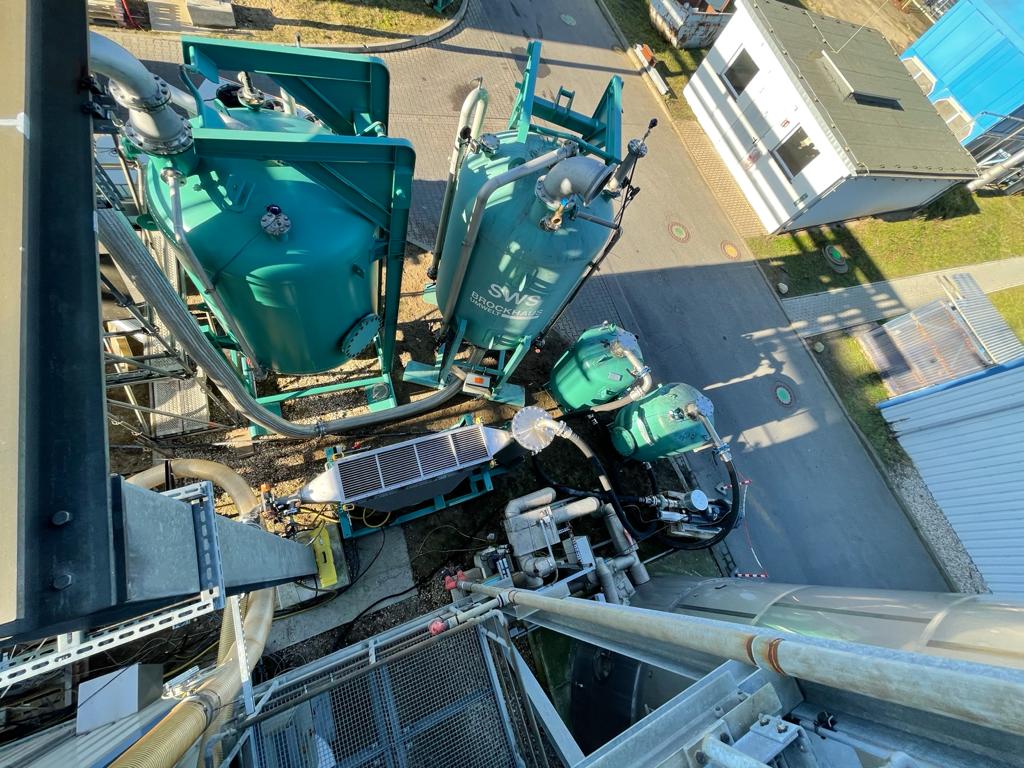Initial situation:
During a campaign producing high-performance catalysts, BROCKHAUS received the order to clean two polluted exhaust air streams.
The waste air had to be purified adsorptively. The ingredients to be adsorbed were hexane, dipropylamine and trimethylamine. The waste air temperatures were up to 80°C! One of the polluted exhaust air streams to be cleaned had a volumetric flow rate of 2,400 m³/h and the second polluted exhaust air stream had a volumetric flow rate of 750 m³/h.
BROCKHAUS was asked to offer a complete solution for odor prevention and to meet the strict requirements of the German technical Guideline TA Luft.
Solution:
Two “cleaning streets” were installed:
Exhaust air stream 1:
- 1 pcs. high pressure radial blower
- Stainless steel corrugated hose DN200
- Flame arrester DN200
- 1 pcs. Shell & tube heat exchanger connected to a cold water chiller
- 1 pcs. condensate separator
- BROCKHAUS – Two Activated carbon filter type LAF-5.000-SWS
- BROCKHAUS – Process monitoring consisting of a metrological monitoring system
VOC-measurement to monitor a possible breakthrough of the activated carbon bed
CO and temperature measurement for the detection of a possible hotspot in the activated carbon
Exhaust air stream 2:
- 1 pcs. side channel blower (provided by customer)
- Chemical hoses DN100
- Flame arrester DN100
- Air / gas cooler
- 1 pcs. condensate separator
- 3 pcs. activated carbon filter type AKF-1.200 (2 filters in operation, one filter stand-by)
Result:
Very good loading capacities of the activated carbon beds of almost 30 wt.-%. Connecting the activated carbon filters in series in combination with the VOC measurement, the loading capacity of the activated carbon bed could be detected in time and the activated carbon filter exchange could be carried out in time.
The pressure loss in the overall system was kept very low, due to the selected pipe cross-sections and component dimensioning, so that the volume flow was still considered suitable despite the very long pipe lengths.
Both exhaust air streams could be cooled sufficiently so that the effective adsorption of the pollutants was possible.

